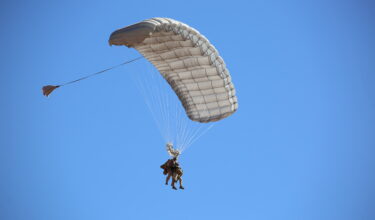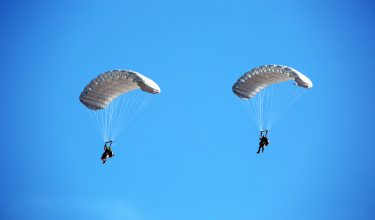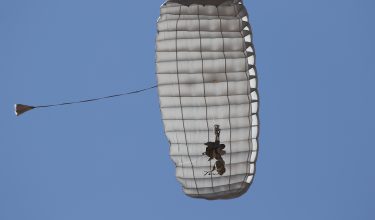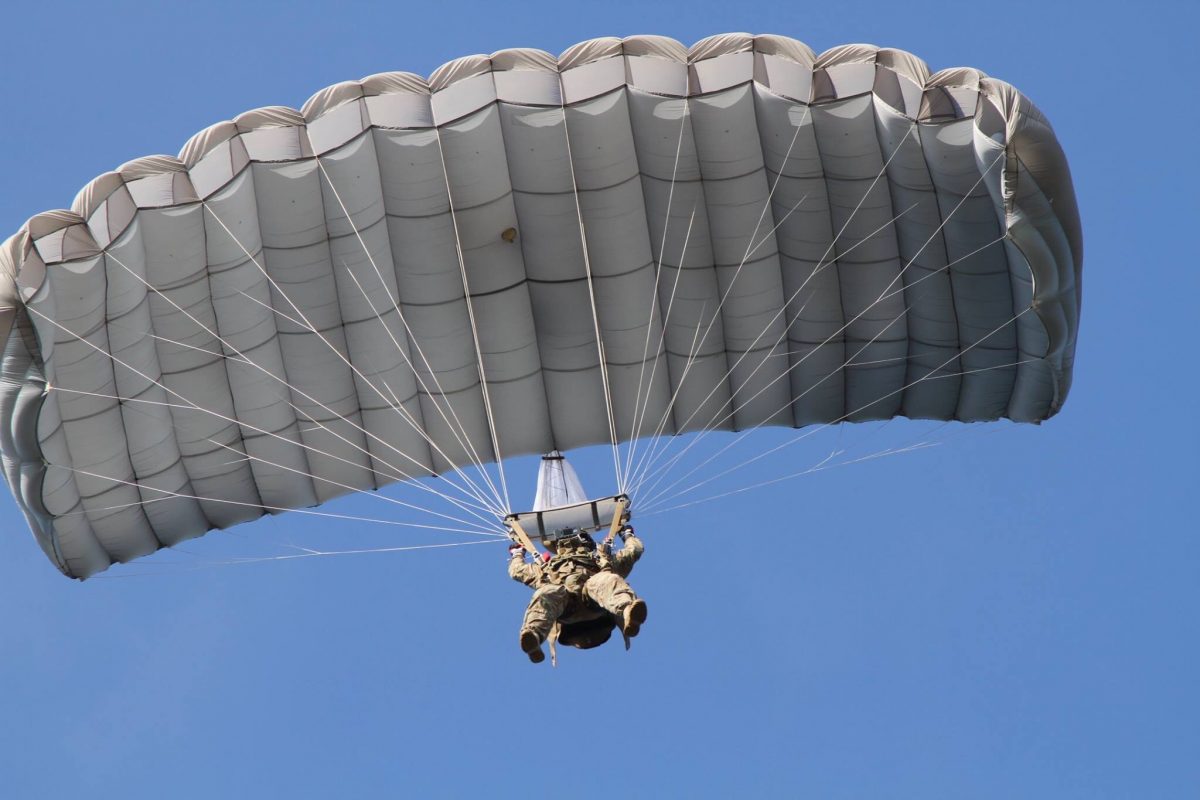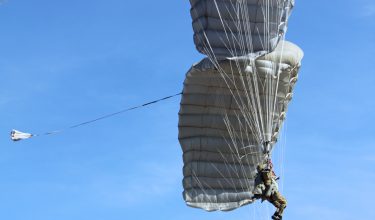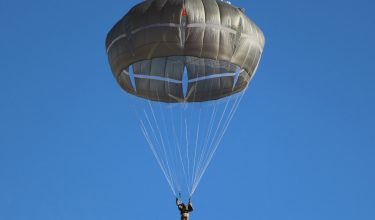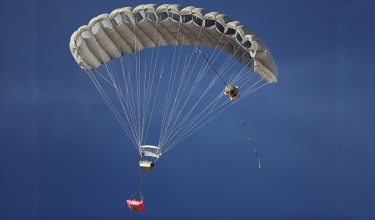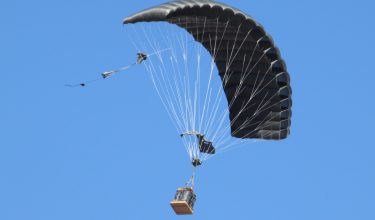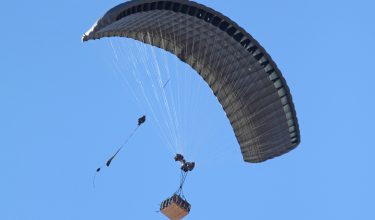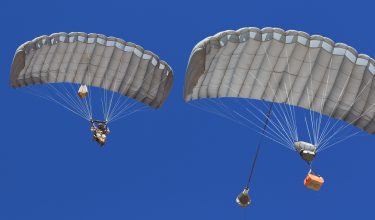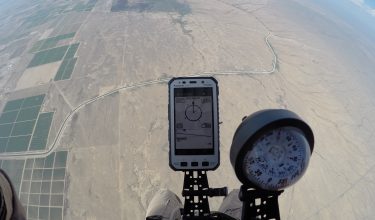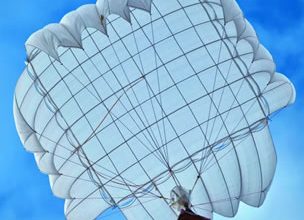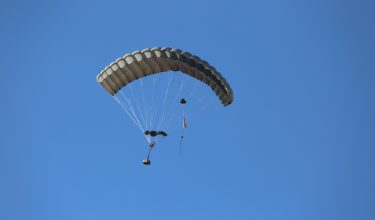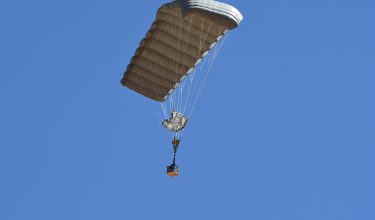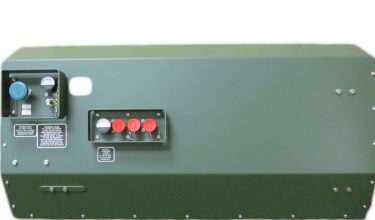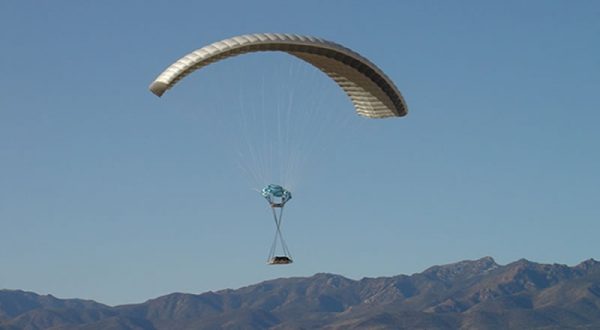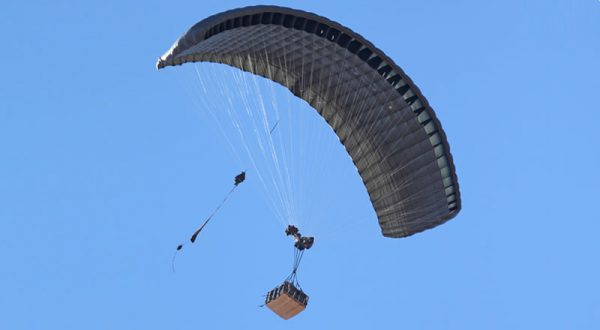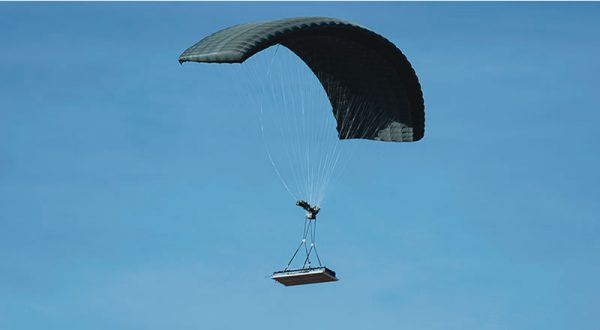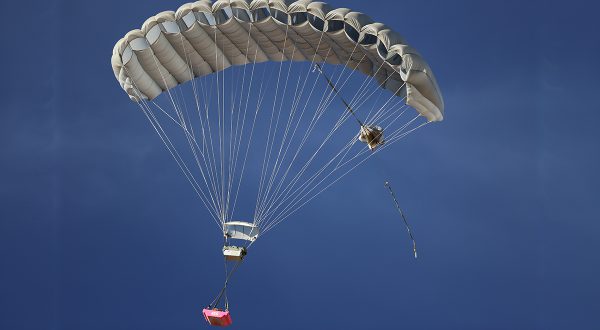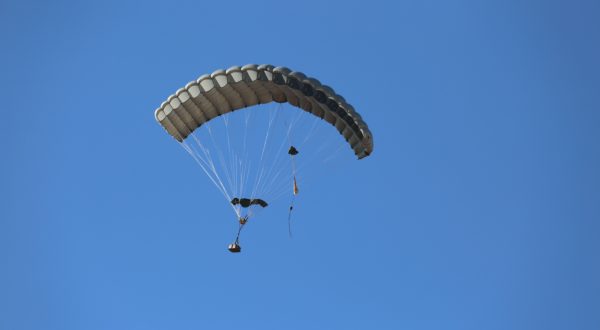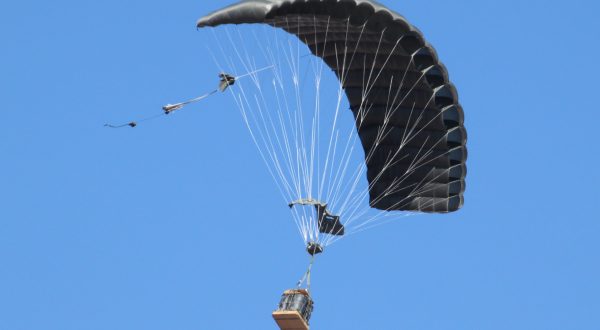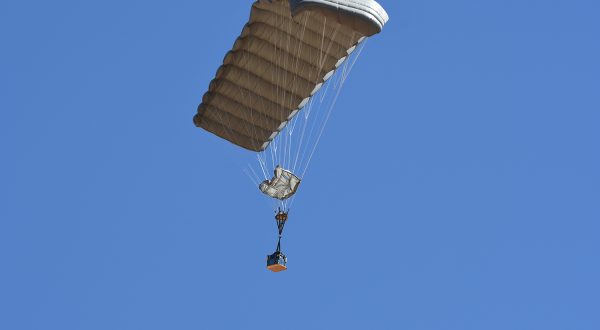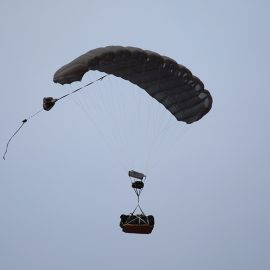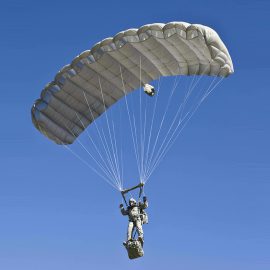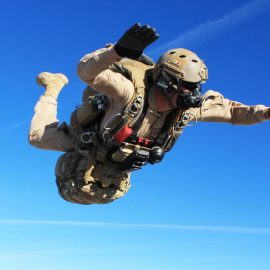Safe Delivery of Valuable Cargo – The Cargo Delivery Parachute of Choice
Selected as the cargo delivery parachute system of choice for the U.S. 10,000 lb. Joint Precision Aerial Delivery System (JPADS 10k) program, the Airborne Systems Dragonfly® is a fully autonomous GPS-guided cargo delivery system. Featuring a fully elliptical ram-air parachute canopy, it has repeatedly demonstrated the ability to land within 150 meters of a designated Impact Point.
Accurate and Easy to Use
The DragonFly® AGU is programmed in the same way as all other AGUs manufactured by Airborne Systems. The only data required to place the system into operation is the location of the Impact Point and the system GRW. Wind data can be uploaded into the AGU, but the wind data is not required for operation. Just as a jumper under canopy continuously reads the winds and makes the required corrections, the DragonFly® makes continual corrections until the final flare to land.
- Using only Impact Point data, the Airborne Guidance Unit (AGU) calculates its position four times per second and continually adjusts its flight algorithm to ensure maximum accuracy.
- Has a glide ratio of 3.0:1 for maximum offset capability.
- Can be rigged for extraction or gravity drop.
Modular Design for Packing and Maintenance
A unique modular system allows the AGU to be charged while the canopy is being packed, enabling turnaround times of less than four hours between drops.
The DragonFly® army cargo delivery parachute system uses a deployment bag similar to a conventional G-11 style deployment bag with a standard Release Away Static Line (RASL). The system can be easily converted from gravity drop to extraction configuration while the system is packed.
- Comes standard with Airborne Systems Mission Planner (jTrax-MP)*
- Compatible with the current U.S. JPADS Mission Planner (JPADS MP)
- *The Airborne Systems Mission Planner is capable of running simulated missions in virtual operational environments when using terrain-mapping software.
Military Mission Planning
Use of a Mission Planner is essential for the accurate deployment of the DragonFly®. Mission Planning can be conducted with the Airborne Systems jTrax Mission Planner or the current U.S. Air Force Consolidated Airdrop Tool Mission Planning Application (CAT MPA). The Mission Planning software calculates the release point for the system by using forecasted wind data and the flight characteristics of the DragonFly® canopy. The Airborne Systems jTrax Mission Planner is also capable of running simulated missions using the included terrain mapping software. Simulating missions before an actual airdrop allows the aircrew to ensure surrounding terrain will have no effect on the mission.
GPADS Control Unit
The Remote Control Unit allows a user to remotely program the system for a mission and can be used to monitor the status of systems while onboard the aircraft prior to drop. After the DragonFly® is dropped, the Remote Control Unit can be used to monitor the location and heading while in flight. If desired, an operator may override the Airborne Guidance Unit and fly the system manually.
Family of Military Cargo Delivery Parachute Systems
The DragonFly® is part of a family of GPADS platforms developed and manufactured by Airborne Systems. The MicroFly®, FireFly®, and DragonFly® systems are capable of delivering gross rigged weights from 200 lb. (90.7 kg) to 10,000 lb. (4,535 kg). Airborne Systems is also developing the MegaFly® and the GigaFly® which will increase the gross rigged weight range up to 42,000 lb. (19,050 kg). All operate with a common algorithm, user interface, and mission planner. The packing methodology for all systems is identical, so little additional training is required to qualify riggers on different systems.

